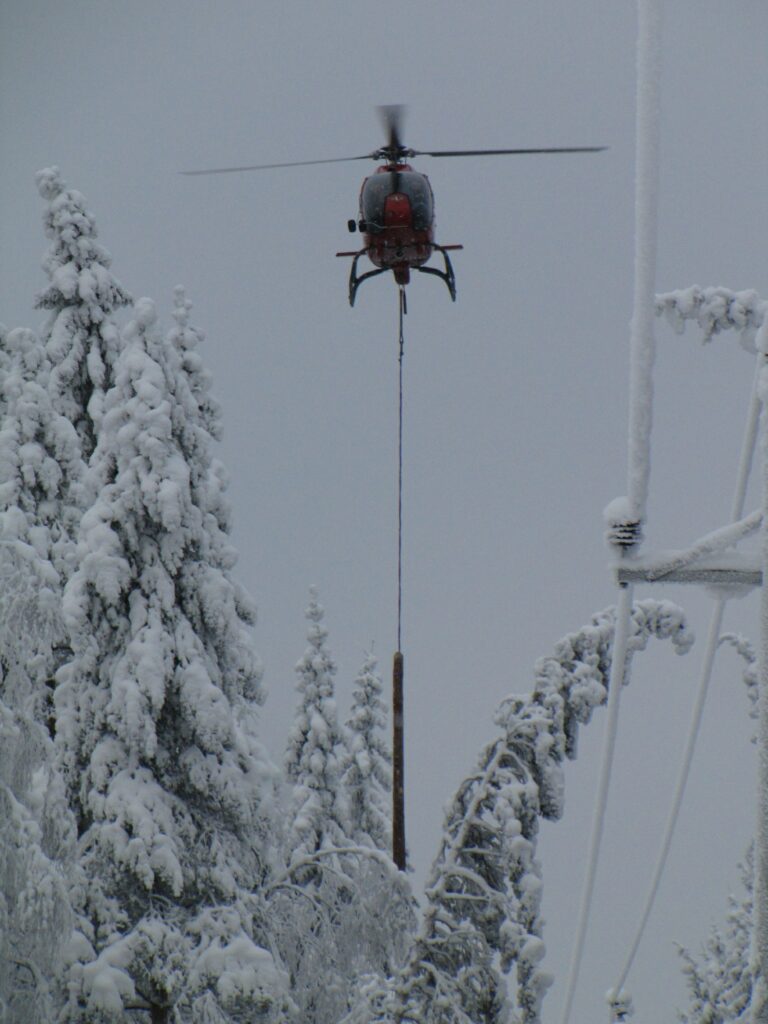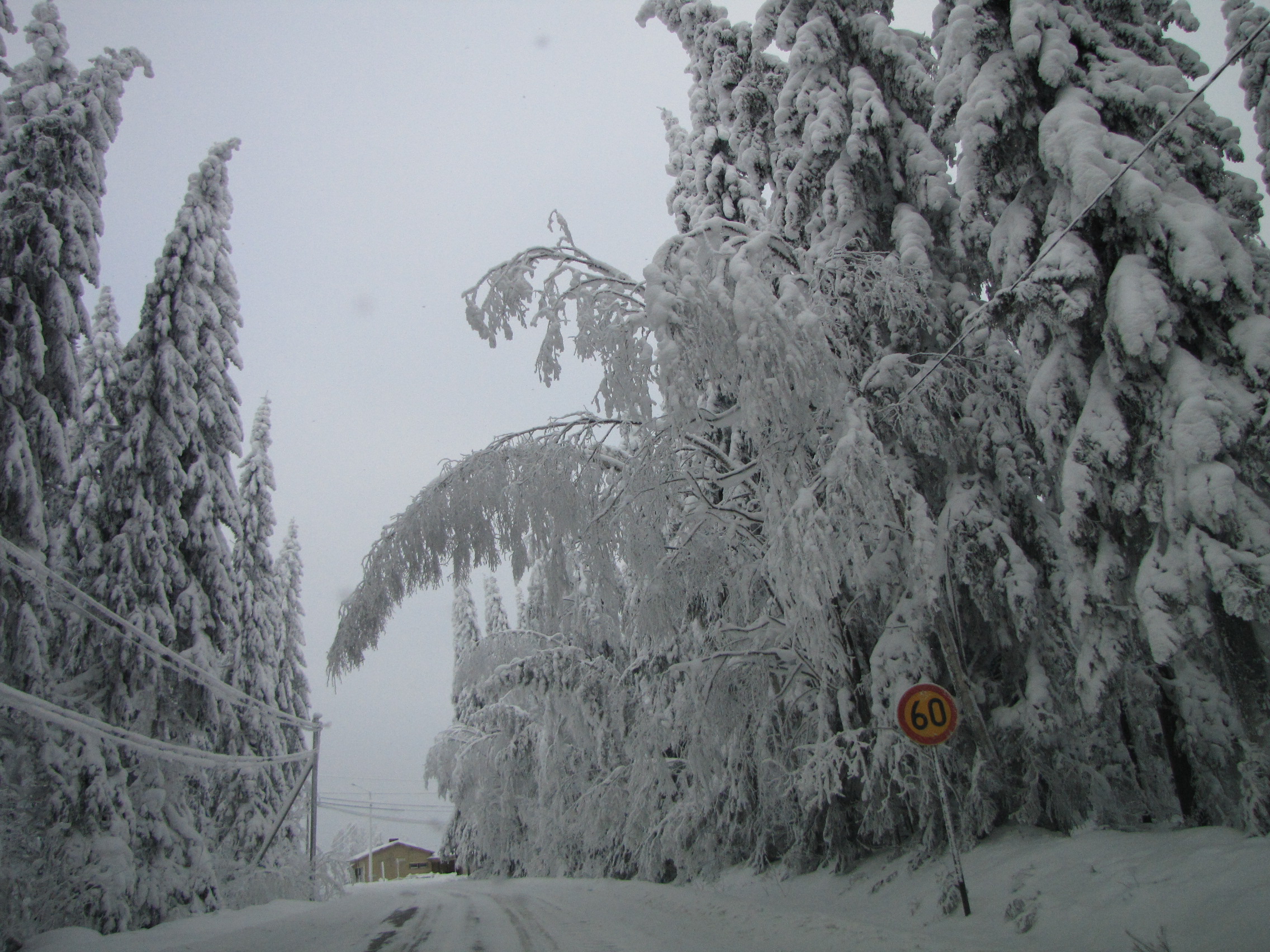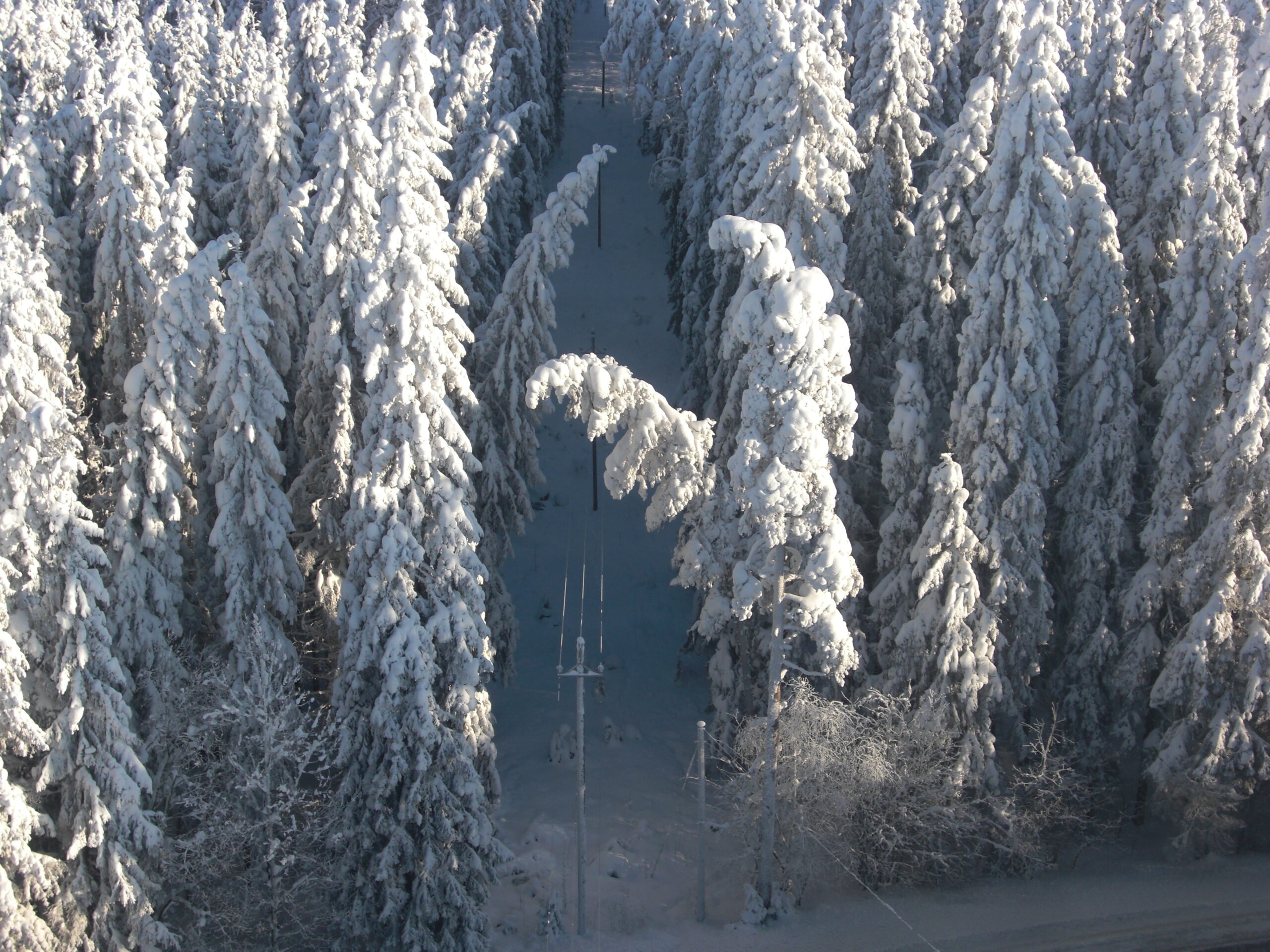Snow damages trees especially in Ostrobothnia

It is estimated that as much as 150,000 cubic metres of timber has been destroyed this winter in South and Central Ostrobothnia because of heavy snow loads. Insurance cover against forest damage due to snow is available in Finland, but all forest owners have not acquired such cover.
According to estimates, snow load will create a loss of up to EUR 5,000,000 for family forest owners in the provinces of South and Central Ostrobothnia in western Finland. The sum consists of loss of timber sales revenues, extra harvesting costs and loss of profit due to discontinuity of forest cover.
Some of the loss may be offset if the forest owner finds a use, or a buyer, for the damaged timber. One possibility is to use it as fuelwood.
Nevertheless, harvesting individual trees is costly, and so most of the damaged trees are allowed to decay in the forest and thus improve forest biodiversity. Damage caused by insects is usually negligent, as spruces are generally not damaged by snow.
According to estimates, only one third of the total of 150,000 cubic metres of trees damaged this winter in South and Central Ostrobothnia will be harvested.
Other estimates indicate that snow load damage will also increase in south-western Lapland and may reach the level of 2013, which would mean a loss of 10,000 cubic metres and EUR 300,000.
Snow load hits individual trees

Assessing snow damage is different from assessing storm damage. In principle, storm damage can be assessed immediately after the storm, while snow damage can only be assessed in late spring, when its full extent will be visible.
This is due to the nature of snow damage: the accumulation of heavy and wet snow on tree branches causes especially birches to bend, but damage will only occur if the tree does not straighten again in the spring. As regards pine, the situation is often worse: it may even snap under a heavy load of snow.
However, pines that break are usually small and would often have been removed anyway in the next thinning.
Snow practically always damages individual trees and continuous areas of snow damage hardly ever occur. Estimates concerning South and Central Ostrobothnia say that this year, snow damage will only increase the total clearcutting area by 50 hectares.
Compensation for snow damage can be included in forest insurance

In Finland, it is possible to insure one’s forest against snow load damage as part of normal forest insurance cover. The Finnish insurance company If estimates that some 70–80 percent of its forestry clients opt for coverage against storm and snow damage.
”As I’ve been known to say, our best sales agents are the storms,” says Mr. Ismo Ruokoselkä from If. A greater concern is that the number of family forest owners that insure their forests at all is only about half of the total of them. Ruokoselkä considers that the volume of snow damage has not varied much in the last few years.
Because snow damage can only be estimated in late spring, insurance companies are unwilling to estimate their extent at this point.
At If, the compensation for snow damage is calculated by first estimating the volume of damaged timber in cubic metres. After that, the forest owner receives compensation for each cubic metre. The level of compensation may be EUR 12, 16 or 21 per damaged cubic metre.
”The forest owner may choose the level in advance, and the level chosen affects the cost of the insurance,” says Mr. Mikko Vaitomaa from If.
After payment of the compensation, the forest owner is free to choose what to do with the damaged timber – it can even be sold. ”Yes, this is the case. It is no longer of interest of us,” says Vaitomaa.
Kirjoita kommentti